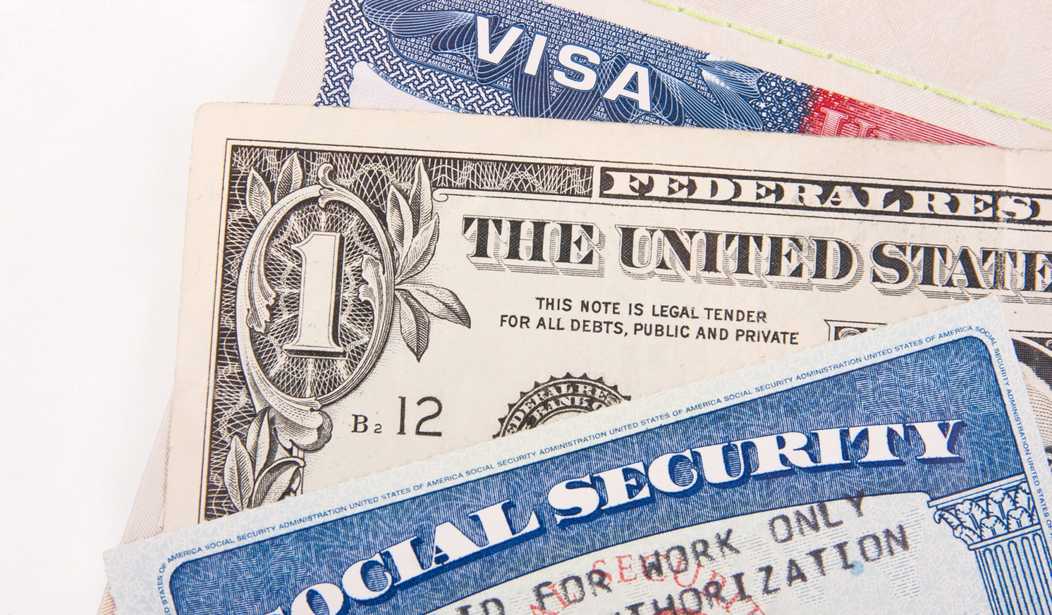Twenty-five years ago, President George H. W. Bush signed into law the Immigration Act of 1990. Instead of reforming the corrosive effects of the Immigration Act of 1965, an act that birthed the mass immigration system we have today, the 1990 act made the situation dramatically worse and make it less likely Americans would fill American jobs.
The act raised the annual immigration ceiling from 530,000 to 700,000 (excluding other types of legal entry like refugee admissions) while creating a coterie of new immigrant and guestworker visas, mostly for semi-skilled and unskilled workers.
Perhaps the most controversial creation of the 1990 act was the H-1B guestworker program. This “grandfather of all American worker sellouts,” according to Michelle Malkin and John Miano in their latest book on the subject, is taken up mostly by bachelor degree-holders from India (where such degrees take only three years) and, according to critics, was really designed not for the “best and brightest” but simply for “ordinary people, doing work.”
Crucially, the 1990 act entrenched U.S. immigration policy with a system completely indifferent to the nation’s general labor conditions. The act’s selected intake numbers were not a product of any careful labor market study and, like now, in no way recognized the actual labor-needs of the country.
The number of immigrant-visas based on employment (rather than family connections) almost tripled from 54,000 to 140,000 while the number and size of non-immigrant guestworker programs increased dramatically.
In a study of the bill years after it was implemented, Cornell labor economist Vernon Briggs noted that between the year of its passage and its implementation there were one million fewer workers employed in the country. As he put it, “[c]ertainly the last thing that the slumping economy needed was an infusion of an additional inflow of immigrant job seekers of this enlarged magnitude”—Briggs rightly sees immigration policy as essentially a labor policy and has long suggested that immigrant visa allotments be adjusted annually according to economic conditions.
Still, the rhetoric surrounding the 1990 act’s passage was that the country was facing a massive “skills shortage.”
“It was a myth,” says Briggs. In reality, he notes, “If labor shortages did occur, industry leaders feared, higher wages would be required to hold present workers and to entice younger workers to aspire to enter these skilled occupations…[f]acing the reality of such a free market outcome, industry leaders sought to find a way for government to artificially swell the skilled labor pool.” In other words, the act was largely designed to insulate corporate executives from market discipline.
Regarding the H-1B, its effects were confirmed immediately after the act was passed. As Alan Merten, chairman of the fifteen-member industry and academic panel, the Committee on Workforce Needs in Information Technology, summarized, “we feel [the number of H-1Bs] is so large that we are totally dependent on it and it depresses wages.”
This “dependency” on low-wage foreign professionals wasn’t limited to IT executives apparently. When the House passed legislation to increase the H-1B cap to nearly 200,000 in 2001 it chose to do so by a voice vote which allows one’s vote to be kept secret.
When asked about the voice vote, then-Senator Robert Bennet (R-Utah), a lead sponsor of the Senate-version of the bill, said frankly, “a whole lot of folks are against [the bill], but because they are tapping the high-tech community for campaign funds, they don’t want to admit that in public.” On these sorts of bills, he said, “everyone signs up so nobody can be in the position of being accused of being against high tech.”
Bennet’s H-1B increase was approved by a vote of 96-1 in the Senate. On the House vote, Congressman Thomas Davis of Virginia, a state that’s always been one of the biggest H-1B-employers, candidly stated, “this bill may not be popular with the public but it’s popular with the CEOs.”
Why it’s popular with CEOs isn’t a mystery. There’s no reason why corporations, at least big, publicly traded ones, should like hiring in a tight competitive labor market. This is especially true for Big Tech firms, which are typically asset-light and have a high level of operating costs going to labor. Most would expect that the pressure on CEOs to meet analysts’ profit estimates each quarter will trump any free-market ethos they may have every time. Why else would the industry spend billions on lobbying and public relations related to immigration? Big Tech’s message to the American public might as well be, “the free market for thee, not for me.”
The 1990 act cemented in place the corporatization of our immigration system, producing disastrous externalities ever since. Cutting wages by artificially expanding the labor supply increases private wealth at the public’s expense, acting like a highly regressive tax on the lower and middle classes.
Two and a half decades of this “immigration tax” has doubtlessly attributed to today’s growing income inequality with over half the nation now earning less than $30,000 a year. What will we be the state of American labor if we let the immigration status quo persist for another 25 years? For the American worker and our tech professionals in particular, true reform of our immigration system cannot wait.









Join the conversation as a VIP Member